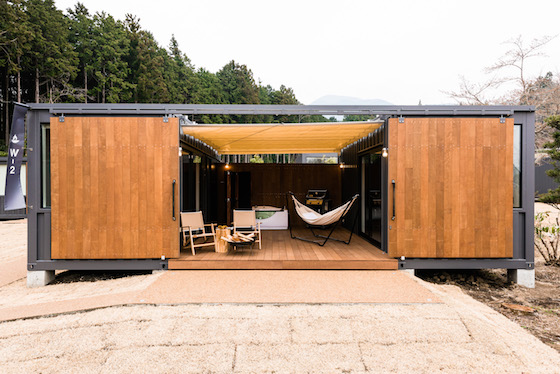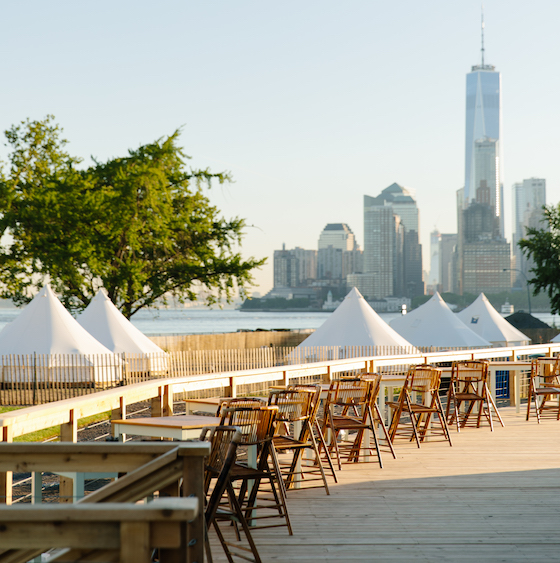Ahhh, camping. For some it conjures up fond memories of family vacations – for others, a whole host of hassles from pitching a tent to fighting off mosquitoes. For those who want the best of both worlds, glamping has become a natural choice.
And there are more and more people choosing it: “Glamorous camping” is projected to reach US$1 billion in revenue in the U.S. by 2024, according to market research firm Arizton.

Contributed by Andrea Guthmann
Long before “glamping” made it into the Merriam-Webster dictionary in 2018, safari outfitters catered to jet-setters wanting to answer the call of the wild in style. Luca Franco, founder and CEO of Luxury Frontiers, best known for high-end tented camps on African game preserves, prefers to call what he creates experiential travel.
In the past decade, he’s seen it go from a wild idea to wildly popular. “Back in 2010, I’d go to hotel conferences explaining my experiential travel concepts of tents, treehouses and floating units,” he says. “Executives of top hotel brands would dismiss it. Now those same people are begging to work together.”

Luxury Frontiers’ newest project, Nayara Tented Camps, opens in November. Nestled in a sloth preserve in Costa Rica, Nayara’s tents have private bathrooms, plunge pools and views of Arenal Volcano.
The property also marks Luxury Frontiers’ entry into the Americas, a market where Franco sees plenty of potential. “In 2010, 95% of the tented resorts in the world were in Africa. Now it’s around 50%,” he says. “We’ve seen a lot of growth in India, Asia and the Middle East in the last decade, but it’s still very limited in the Americas.”
Brands like Collective Retreats are already staking their claim, however. “Hotel brands are so over-standardized, I’d often wake up in a new city not knowing where I was,” says founder and CEO Peter Mack. “I wanted to create a hospitality brand with a more authentic sense of place while at the same time reducing a lot of the inefficiencies and fixed costs.”
In 2015, the first Collective Retreat popped up in Vail. Four years later, the company has raised US$18 million in outside investment and has five profitable locations in the U.S. Decor at each is locally sourced, but certain amenities are consistent. Whether on an organic farm in the Hudson Valley or a working ranch in Montana or Texas, guests will find high-thread-count sheets, daily housekeeping, electricity, WiFi and on-site F&B.
Who’s the target market? “Most guests come from nearby cities and suburbs,” says Mack. “They’re adventurous, looking for something a little different.” Or very different: Collective Retreats’ most popular property is on Governors Island, an eight-minute ferry ride from Manhattan’s financial district, with views of the Statue of Liberty.
Like Collective Retreats, easy access to major cities is part of the glamping game plan for Japanese hotelier Fujita Kanko. Its first glamping resort opened in 2018, 90 minutes from Tokyo, with breathtaking views of Mount Fuji.
“Over-tourism has become an issue in Japan’s popular tourist destinations. We operate more than 70 properties throughout Japan, so obviously we are aware of this,” says Yoshihiro Ise, Fujita Kanko’s president and CEO. “We want to introduce travelers to undiscovered places and revitalize these local communities.”
Convincing resorts to embrace a low-impact, high-yield mindset isn’t always easy. Designer Bill Bensley (see sidebar) says he may never actually make a profit with his Cambodian venture, Shinta Mani Wild. Yet other hotel brands see glamping as a cost-effective way to expand lodging. California’s Ventana Big Sur, for example, just added luxury tents in its redwood forest.
Luxury Frontiers’ Franco sees adding experiential lodging to an existing property as a profitable way to create two experiences in one resort.
“It’s a way to widen your existing market and incentivize loyal guests to come back or extend the journey — three days in the traditional building, two days in the treehouse, for example,” he says. “It’s really a very compelling business strategy for a hotel to have a second shared experience within the same property.”
Although Luxury Frontiers isn’t constructing traditional bricks-and-mortar lodging, Franco insists it is building value.
“Luxury tents and treehouses typically generate 20% 40% rate premium revenue over traditional rooms and cost less to build. Our projects cost anywhere from US$200,000 to US$600,000 per room but can generate US$500 to US$5,000 per room rate. Because they’re unique experiences, people will pay more.”
Another glamping dividend? “Media love anything environmentally friendly,” Franco says. “That means you get a lot of publicity.”
Fujita Kanko’s Ise agrees. “Instagram and social media have a big influence, especially among millennials. Glamping generates breathtaking images, which we’re taking advantage of with our social media channels.”
Any fears the glamping trend is just a fad? Not for Franco. “After the 2008 recession people don’t want to collect things. They want to collect memories and experiences. Experiential travel creates a lot of memories. People also want to disconnect from the electronics and connect with nature and their travel partners. That’s not going to change.”
